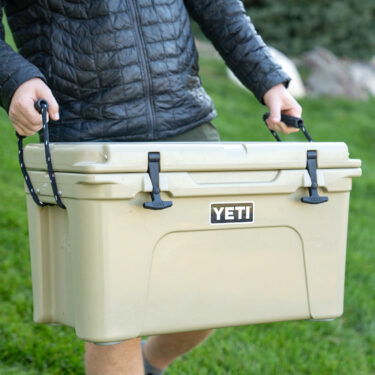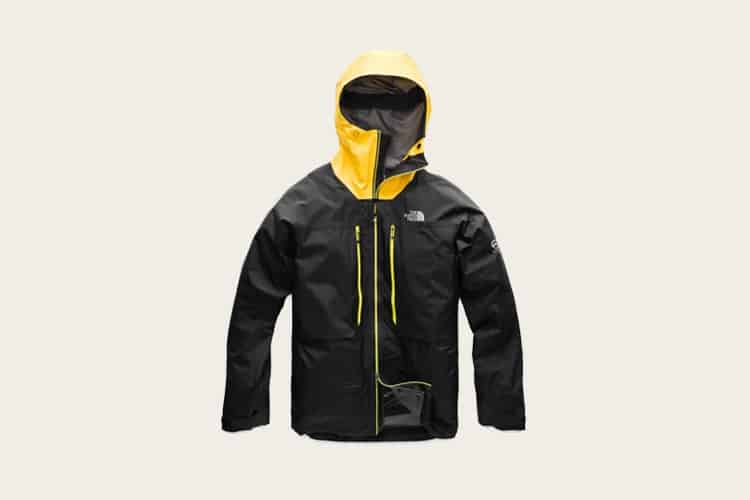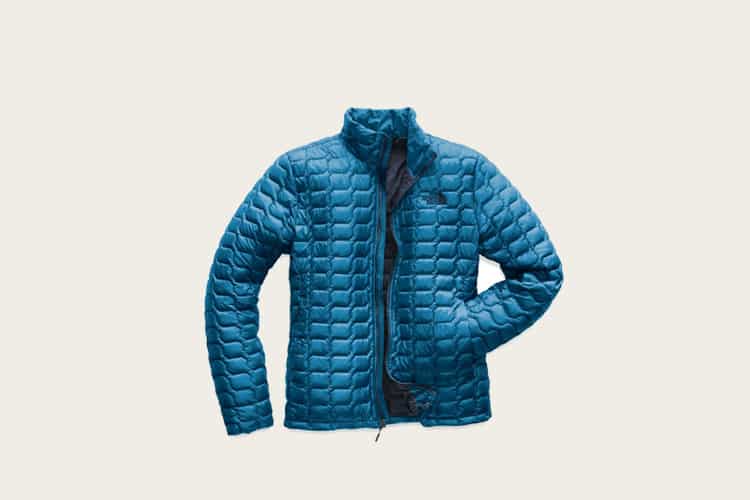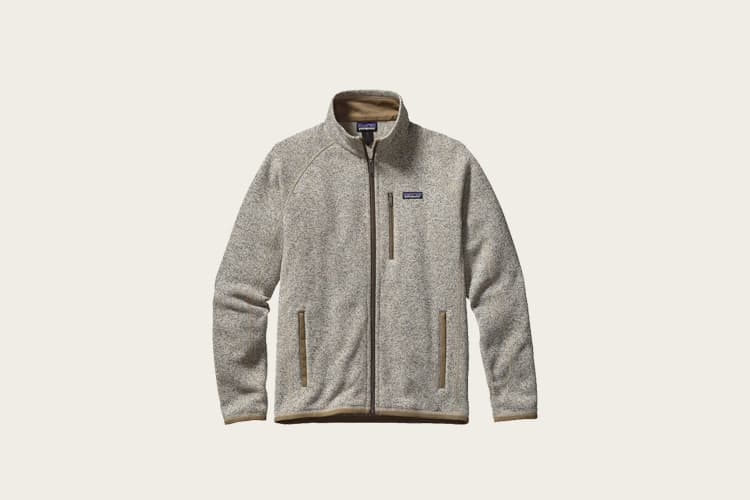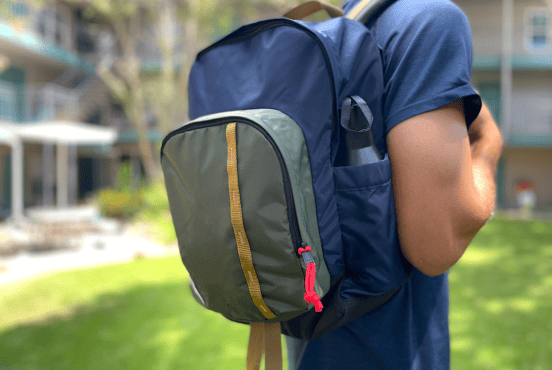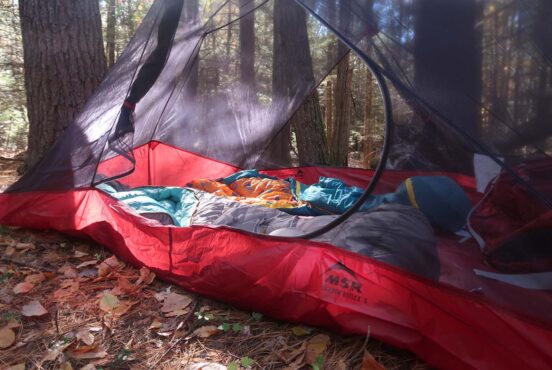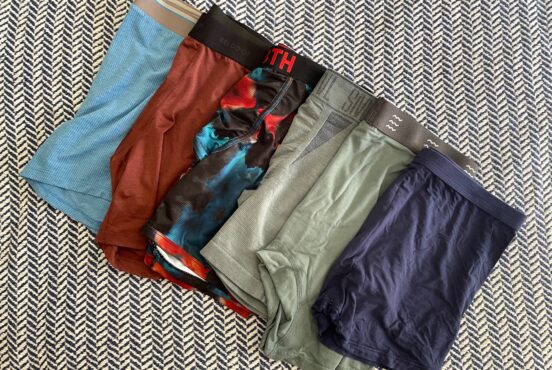Patagonia and The North Face are longstanding staples in outdoor retail stores, some of the few companies that you can instantly trust for quality based on the brand alone.
You can’t go wrong with Patagonia or The North Face, but then again, their price points are high enough that you usually can’t buy everything on the shelf. So, when you have to whittle it down to one, who’s the superior brand?
The answer is, it depends. In most cases, it depends on what you’re using the product for. While Patagonia and The North Face serve similar markets — hiking, climbing, mountaineering, trail running, and general outdoor recreation — they each excel in different areas.
Of course, there are plenty of markets where you won’t have to choose between the two. The North Face offers tents and expedition-worthy gear, but you won’t find any shelter or Antarctica-ready parkas at Patagonia. On the other hand, Patagonia manufactures specialty apparel for surfing, fly fishing, snow sports, and mountain biking.
In this article, we’ll focus on the products where Patagonia and The North Face directly compete for your business. But first, let’s start with a quick look at each company’s background and how they’ve evolved into the market-dominating powerhouses that they are today.
Patagonia: The Pinnacle Of Quality And Sustainability
Patagonia got its start in 1957, when Yvon Chouinard started making his own hard-iron pitons for climbing. After years of selling them out of the back of his car, demand grew enough to launch Chouinard Equipment in 1965.
The brand continued to grow in popularity as Chouinard redesigned and improved climbing tools, making them lighter, stronger, simpler, and more functional.
It wasn’t until 1972 that Chouinard Equipment expanded into apparel and officially launched the Patagonia brand.
View this post on Instagram
Chouinard Equipment was eventually sold and reorganized under Black Diamond Equipment, but Patagonia continues to thrive as it expands past its climbing roots to surfing, fly fishing, trail running, mountain biking, winter sports, and general outdoor apparel.
Patagonia is best summarized by taking a look at its Mission Statement, where you’ll find five core values that guide the company:
- Build the best product
- Stay true to the core values of simplicity and utility
- Cause no unnecessary harm
- Use the business to protect nature
- Refuse to be bound by convention
Here’s the thing — you’re going to pay a little more for Patagonia gear and apparel, but you’re paying for premium quality. You’re also supporting a company that donates a minimum of 1% of sales to environmental causes, with an emphasis on supporting local, grassroots conservation efforts.
Environment stewardship is baked into the company culture, too, so you’re supporting a business that incorporates sustainability into every step from the supply chain to manufacturing.
In short, you’ll pay a premium for Patagonia products, but your return on investment surpasses the dollars and cents listed on the price tag.
The North Face: Outfitting Explorers Since 1966
The North Face is named for the coldest, most unforgiving side of a mountain, but the brand actually got its start in sunny San Francisco.
While Patagonia was outfitting climbers during the 1960s, The North Face emphasized mountaineering and exploration, giving rise to their popular mantra — Never Stop Exploring.
Over 50 years later, the company’s fundamental mission remains unchanged:
- Provide the best gear for the modern athlete and explorer
- Inspire a global movement of exploration
- Support the preservation of the outdoors
There’s definitely a focus on exploration in the company’s core values, and that’s where The North Face shines.
View this post on Instagram
You’ll see The North Face logo on tents at Everest Base Camp, on parkas at the South Pole, and on the feet of ultra runners blazing mountain trails. In short, if you’re heading into extreme environments and severe weather, The North Face has your back.
Of course, there’s plenty of North Face gear for everyday people like you and me who don’t have an Everest summit or Antarctica expedition on our bucket list.
Where Patagonia almost exclusively offers premium gear and apparel, you’ll find that The North Face offers a wider range of products. The company has more affordable options for budget-minded shoppers, and they also manufacture more high-end, ultra-premium products.
So, if you find yourself at one of the polar ends of the spectrum — shopping on a tight budget or outfitting an extreme expedition — The North Face is usually the better option. When you’re in the middle (which is where most of us usually fall), it’s a pretty close competition between Patagonia and The North Face.
Head To Head Comparison
The best way to gauge the difference between Patagonia and The North Face is to see how their products stack up head to head. We’ve selected the best-selling gear and apparel from the most popular outerwear categories to compare directly against each other, crowning a winner based on overall value, quality, and performance.
It’s safe to say you’re in good hands if you pick either product in the chosen categories, so follow your gut if a particular style or price point suits you best. But if you’re looking for winners, we’ll be sure to point them out for you.
Mountaineering Jackets
The North Face Summit L5 GORE-TEX Pro Jacket
The Summit Series is the pinnacle of outdoor product technology, design innovation, and field testing. The North Face designs this collection to keep athletes warm, dry, and safe in extreme environments. They’re engineered based on extensive feedback from athletes in the field, delivering the strongest, lightest summit-capable gear on the market.
The L5 GORE-TEX Pro Jacket is built for places like the Alaska Range and Khumbu Icefall. Thanks to premium GORE-TEX Pro fabric, the jacket is waterproof, windproof, and surprisingly breathable, with the rugged durability you need to survive in harsh conditions.
Features:
- Fully adjustable hood with Cohaesive cord locks and a laminated wire brim
- Matte PU Vislon center front zip, alpine chest pockets, and pit zips
- Non-abrasive adjustable Velcro cuff tabs
- Hem cinch-cord with large Cohaesive cord locks
- Removable powder skirt
Patagonia Pluma Jacket
The Patagonia Pluma Jacket is a few ounces lighter than the North Face L5 GORE-TEX Pro Jacket, but this packable hard shell is just as capable as its competitor.
Thanks to a combination of triple-layer GORE-TEX Pro fabric with GORE Microgrid Backet Technology, the jacket is completely waterproof, windproof, and even more breathable than the L5 GORE-TEX Pro Jacket. There’s a DWR finish to shed excess moisture, and the minimal seams are reinforced with narrow seam tape to limit the jacket’s bulk.
Features:
- Adjustable hood with single-pull Cohaesive embedded cord-lock system
- Watertight zippers on the handwarmer pockets, chest pocket, and pit zips
- Embedded cord locks at the hem for easy adjustment
- Cuffs feature minimal hook-and-loop closure and textured PU inner cuffs
Winner: Patagonia Pluma Jacket
The Patagonia Pluma Jacket is perfect for alpine climbing, mountaineering, and cold-weather backpacking, delivering the same performance level as its competitor for a better overall value. We’d definitely pick The North Face L5 GORE-TEX Jacket for an Everest expedition, but let’s face it — the average outdoor enthusiast isn’t heading to Nepal anytime soon.
Down Insulation Jackets
The North Face Morph Jacket
The North Face Morph Jacket was designed specifically for climbers, but you don’t need to be scaling El Capitan to enjoy this beauty. The ultra-warm windproof jacket is perfect for winter sports, hiking, backpacking, mountain biking, and casual cold-weather attire.
The Morph Jacket features 800 fp goose down and a proprietary woven-chamber construction that reduces stitching and eliminates cold spots to keep you toasty warm. It’s extremely compressible, and folds up into one of the pockets for an on-the-go stuff sack.
The lightweight jacket looks slick with a slim Alpine Fit that’s specifically designed for vertical movement. The design is harness-friendly and pack-friendly, making it ideal for climbers, hikers, and backpackers.
Features:
- 800 fp goose down insulation
- Proprietary woven-chamber construction
- Vislon center front zip, reverse-coil chest and hand pocket zips
- Internal elastic bound cuffs
- Hidden hem cinch cord
Patagonia Down Sweater Jacket
The Patagonia Down Sweater Jacket offers the right amount of warmth for just about everything, whether you’re hitting the slopes, backpacking the Oregon Coast Trail, or just running errands on a chilly weekend afternoon.
The jacket features 800 fp Advanced Global Traceable Down with quilted-through construction. The polyester ripstop shell with a DWR finish repels water and snow and is fully windproof. It’s also highly compressible, with an interior chest pocket that doubles as a zippered stuff sack with a carabiner clip-in loop.
Patagonia gets all the little things right here. The Down Sweater Jacket features Vislon zippers, a drawcord hem that tightens from inside the zippered handwarmer pockets, nylon-bound elastic cuffs to seal in the heat, and a wicking interior storm flap and zipper garage for the center zipper.
Features:
- 800 fp Advanced Global Traceable Down
- Polyester ripstop shell with DWR finish
- Exposed Vislon zippers, zipper garages, and moisture-wicking interior storm flap
- Hidden hem drawcord inside the zippered handwarmer pockets
- Nylon-bound elastic cuffs
Winner: Patagonia Down Sweater Jacket
This one is almost too close to call. The jackets are nearly identical, and The North Face Morph Jacket actually looks a little better with its slim fit and vertical quilting on the shoulders.
Patagonia wins on the details, though. The Down Sweater Jacket is made with DWR ripstop polyester, so it’ll repel water better than the Morph Jacket. It also features all Vislon zippers, zipper garages, an interior storm flap, and the incorporated stuff sack has a zipper and carabiner.
The Patagonia Down Sweater Jacket also offers a better value at its starting price point.
Synthetic Insulation Jackets
The North Face ThermoBall Jacket
The North Face ThermoBall Jacket is a slim fit coat with a durable, windproof, water-resistant shell, but it’s what’s on the inside that makes this jacket special.
The North Face developed their proprietary ThermoBall insulation in partnership with Primaloft, an industry leader in synthetic insulation. Unlike traditional continuous-filament synthetic insulation, rounded ThermoBall fiber clusters mimic down clusters to trap heat in small air pockets. It’s equivalent to 600 fp goose down in terms of warmth and compressibility, with the added bonus of retaining heat when wet (which is the downfall of goose down).
The North Face ThermoBall Jacket features a bottleneck quilting pattern that limits cold spots and improves overall durability. It folds up into the hand pocket for easy storage and portability, making it an ideal jacket for hiking and backpacking.
Features:
- ThermoBall synthetic insulation mimics down and retains heat when wet
- 15D ripstop nylon shell with DWR finish is windproof, water resistant
- Secure-zip chest pocket and hand pockets
- Internal, elastic-bound cuffs and hem cinch cord
- Exposed Vislon center front zip
Patagonia Micro Puff Jacket
The ultralight Micro Puff Jacket from Patagonia delivers high-tech warmth and durability inside and out.
For insulation, the Micro Puff Jacket uses revolutionary PlumaFill that replicates the structure of down in continuous synthetic insulation material. It delivers the packability, warmth, and feel of down with the water-resistant performance of synthetic insulation. The jacket employs an innovative quilting construction to stabilize and maximize the loft with minimal stitching.
On the outside, the Micro Puff Jacket features a DWR nylon ripstop Pertex Quantum shell. The ultralight fabric is water resistant, windproof, and durable. The left pocket doubles as a stuff sack for convenient storage, and there’s a reinforced carabiner clip-in loop to attach to your pack or belt.
Features:
- PlumaFill synthetic insulation is like down, but better
- Center zipper has a storm flap and zipper garage
- 2 welted zippered handwarmer pockets and 2 internal drop-in pockets
- Elasticized cuffs and hem seal in the warmth
Winner: The North Face ThermoBall Jacket
These jackets offer nearly identical tech specs, with synthetic insulation that replicates the quality and compressibility of down while retaining the ability to insulate when wet. Given the similarity, the ThermoBall Jacket wins on style and value.
Rain Jackets
The North Face Venture 2
The North Face Venture 2 is a packable, unlined rain jacket that you can use year-round. The seam-sealed DryVent 2.5L shell employs a PU coating with a tri-component, multi-layer formula that’s waterproof, windproof, breathable, and highly durable.
The Venture 2 comes with an adjustable hood with room for your helmet and extra layers. There’s also pit zip venting for optimal breathability.
When the weather clears up, you can pack the jacket into its own pocket for easy storage in your backpack.
Features:
- 100% Waterproof and windproof
- Breathable fabric with pit zips
- Velcro storm flap over the front zipper
- Covered, secure-zip hand pockets
- Velcro adjustable cuff tabs and hem cinch-cord
Patagonia Torrentshell Jacket
The Patagonia Torrentshell Jacket has a 2.5-layer waterproof, windproof H2No Performance Standard shell with pit zips for maximum breathability. The two-way adjustable hood has a laminated visor to keep the rain out of your face, and you can roll the hood down to stow in the collar with a simplified cord-and-hook design.
The Torrentshell Jacket has a microfleece-lined neck to keep things comfortable while you’re on the move. The center zipper features minimal-welt exterior and interior storm flaps, and there’s a chin guard to keep the zipper from irritating your neck. When not in use, you can stuff the jacket into the handwarmer pocket and clip it to your belt with the carabiner clip-in loop.
Features:
- Waterproof, windproof, and breathable
- Zippered pockets and pit zips have welted exterior storm flaps and DWR zippers
- Microfleece-lined collar
- Self-fabric hook-and-loop closures
- Adjustable drawcord hem
Winner: Patagonia Torrentshell Jacket
The North Face Venture 2 is a great value at its standard price point, but it’s worth upgrading to the Patagonia Torrentshell Jacket for the little details like a microfleece-lined collar and a laminated visor on the hood.
Fleece Jackets
The North Face Denali 2 Jacket
The North Face Denali 2 Jacket is built for cool approaches. The iconic jacket is made with recycled fleece for unparalleled comfort, warmth, and durability. The jacket also features a reinforced chest, shoulders, and forearms for maximum abrasion resistance.
Features:
- Reinforced chest, shoulders, and forearms
- Zip-in compatible with complementing North Face apparel
- Covered, secure-zip chest and hand pockets
- Stretch fabric on the cuffs for improved comfort and mobility
- Media compatible
Patagonia Better Sweater
The Patagonia Better Sweater might be the most versatile jacket in your wardrobe. Equally comfortable in the city and the backcountry, you can wear this sleek jacket straight from the office to the trail.
The Patagonia Better Sweater is made with 100% polyester fleece, featuring a sweater-knit face, moisture-wicking fleece interior, and heathered yarns. The raglan sleeves deliver optimal mobility and pack-wearing comfort, while the flat-seam construction reduces bulk and eliminates seam chafe. The shape-holding micro-polyester jersey trim at the cuffs and bottom hem provide extra abrasion resistance.
Features:
- 100% polyester fleece with a sweater-knit exterior
- Comfortable, moisture-wicking interior
- Raglan sleeves
- Flat-seam construction
- Shape-holding micro-polyester jersey trim
Winner: Patagonia Better Sweater
If you’re buying a fleece jacket exclusively for trails and backcountry adventures, go with The North Face Denali 2.
If you’re looking for versatile fleece apparel that’s equally at home in the city and the backcountry (which is where most of us fall), we prefer the Patagonia Better Sweater. Try it on, and the Better Sweater will quickly become your go-to for cool weather.
Conclusion
You can’t go wrong with any product from Patagonia or The North Face. So, if you’re purely shopping on a budget, don’t feel like you’re sacrificing much if you choose one over the other based solely on price.
The same goes for style. If you find yourself drawn to a particular product based on how it looks, trust your instinct. You don’t have to worry about choosing an inferior product with Patagonia and The North Face.
Once you remove price and style from the buying equation, it comes down to the purpose behind your purchase. For alpine ascents, severe weather, and rugged durability, go with The North Face. When you’re looking for modern, minimalist gear and apparel that’s equally comfortable in the city and the backcountry, go with Patagonia.
Recommended Gear Apparel
For recommendations on the best outdoor apparel, check out our favorite trail running shoes, minimalist sandals, lightweight rain jackets, hiking pants, hiking hats, camp shoes, American-made hiking boots, bomber jackets, American heritage work boots, Chukka boots, waxed canvas jackets, and field watches.

